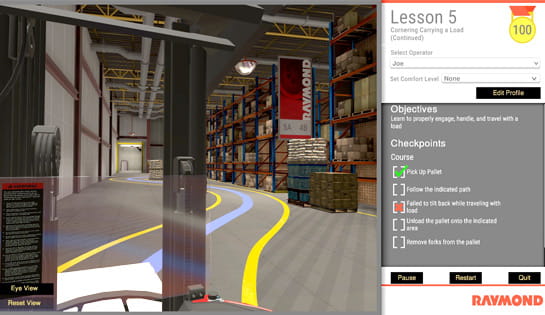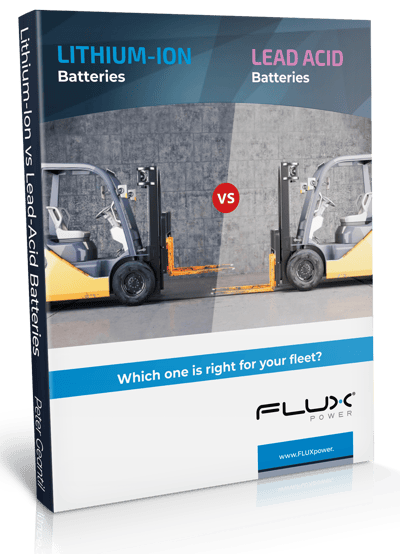How to drive a Stand-Up Forklift? Two main ways of operating a forklift exist. Operating while sitting down, and operating while standing up. Now obviously you should always sit down while operating a sit-down forklift, but some types of forklifts (called Stand-Up Forklifts) are actually made to be operated while you are standing up!
These simple instructions will Significantly increase the life of the lift and get you familiarized with an electric forklift. In constant demand, it’s tempting to skip protocol when it comes to maintaining the forklift batteries. But for each episode of mishandling, the life of the battery is cut short. To extend the life span of your forklift battery, to ensure safety and optimal performance, and to decrease unnecessary expenses, proper maintenance is crucial. I wanted to let you know how much we are enjoying our new Screenco screen. We have been unloading our septage through a rotary screen for twelve years now and have just dealt with the difficulty of it plugging up and having to stop the process to clear the screen. Our new Screenco screen is a dream to use.
Contents
How to drive forklift for beginners?
How to drive a Stand-Up Forklift? – How do you do that? Very carefully! The controls on stand-up forklifts are very sensitive to even the slightest touch, so you must always be careful when operating them. Here are some other tips for operating a stand-up forklift!
How to drive a Stand-Up Forklift?
As the name suggests, when operating a stand-up forklift, you are standing while using your hands and feet to control it. Stand-up forklifts can be great in areas where you need to save space and improve efficiency, as they allow the operator to get on and off quickly.
Operating a stand-up forklift is completely different from operating a regular sit-down forklift, so you will need to orient yourself to ensure your own and your co-workers’ safety. If you have never used a stand-up forklift, here are some tips to help you out. However, remember that you need a certification to drive a stand-up forklift, so if you don’t have this, you will need to do some training.
How to operate a stand-up forklift?
How to Drive a Stand-Up Forklift?
- To start the forklift, turn the key and make sure that the forks are retracted.
- When moving, the forks should be pointed slightly upwards. You should never drive with the forks extended.
- Stand-up forklifts use a control handle for steering, instead of the traditional steering wheel. To move, tilt the control handle in the direction you need to go while keeping your foot on the power pedal.
- When reversing ensure you beep your horn to warn anyone behind you and look around to make sure the coast is clear.
- Then slowly pull the control handle towards you while pressing the accelerator pedal to start moving backward.
- To pick up a load, position the forklift in front of the rack where the load is.
- To stop the forklift, remove your foot from the accelerator pedal and put the control handle back into the original position.
- Level the forks and lift them to the height of the pallet. Slowly move forward then extend the forks by pressing the button near the control handle. When the forks are firmly in place, slowly raise the load and retract the forks.
- Make sure to keep the load two inches away from the ground when moving.
How to maneuver a stand up forklift?
When choosing between a sit-down forklift vs a stand-up forklift you need to consider what is best for your environment and material handling needs. There are several advantages to driving a stand-up forklift. – How to drive a Stand-Up Forklift?

- Stand-up forklifts save more space which makes them ideal for tighter warehouses where there is less room to move.
- It makes it easier for operators to quickly get on and off the forklift, making them more convenient and increasing efficiency.
- Standing-up while working helps to increase the operator’s attentivity, productivity and increases alertness.
- It allows for better visibility and reduces neck strain.
How to use a stand up forklift?
You must follow the proper safety rules when operating a stand-up forklift. There are basic operating standards that you must adhere to when operating the stand-up forklift.
Stand up on the forklift and get a feel for the controls and the steering knob. The steering is done with the knob steering plate instead of a steering wheel. This knob moves very fast, so you must become accustomed to moving it sensitively and don’t oversteer. The horn is on the control handle, as well as the control for forwarding, backward and the movement of the forks. The floor pedal gives the forklift the power to move.
Turn the key to start the forklift. Make sure that the forks are retracted. They should be pointed slightly upwards when you are moving around the floor. Never drive with the forks extended. If you are going forward, move the control handle forward and step on the pedal to make the lift go forward. If you are backing up, beep your horn and look behind you to make sure the way is clear. Pull the control handle towards you while stepping on the petal.
Forklift stand up controls
stand up forklift tips:
If you are new to stand-up forklifts, practice operating one in a large, open space, free of any potential road hazards. Once you really understand how to operate it, go ahead and start moving loads in the warehouse.
- Never step on the floor pedal until you are ready to operate your forklift. The pedal just gives power to whatever the forklift controls are doing, so unless you are actually doing something you need to be doing, don’t press on the pedal.
- Never drive with the forks out while empty. That is just you asking for trouble! Countless accidents are caused every day because someone got hit by lowered forks. If you are driving, keep your forks up!
- If you are backing up, beep your forklift horn. You should already be watching behind you as you back up, so just go ahead and beep your horn too. It will help notify people that you are backing up and keeps people from walking behind your forklift.
- If you ever have to stop your stand-up forklift for any reason, move the control handle to the middle position and release the handle.
- Never drive a forklift with the load raised high up into the air, doing so can make the forklift unbalanced and cause it to tip over.
Stand up forklift certification
What is Stand Up Forklift Certification and Why Do You Need It?
Learning how to drive a stand-up forklift will take a lot more than just reading a step-by-step instruction. If you want to use stand up forklifts at your job, or for a new job, you need proper stand up forklift training and certification.
A specialized course will teach you exactly how to operate a stand-up forklift truck, in all applications such as narrow aisles and driveways, how to perform equipment inspections, how to assess the environment, and how to avoid risks to avoid accidents.
Being certified in a course to drive forklift trucks, in a professional environment, will allow you to have the knowledge to avoid accidents that can cause damage, injuries, etc.
You will also comply with OSHA to ensure you are up-to-date with all major industry and safety regulations.
OSHA forklift training
Stand-up forklifts are much different from sit-down forklifts, but a few important rules about the two are the same. Always get licensed before you operate them, and always follow OSHA guidelines. Follow what you learn while getting licensed, follow OSHA guidelines, and follow these helpful tips.
How to maneuver a stand up forklift?When moving without loaded forks, tilt the forks slightly upwards, but not raised up into the air. Use the control handle to control the steering. When you want to move forward, tilt it forward, and tilt it back to move backward.
 How do you stop a forklift standing up?
How do you stop a forklift standing up?To stop the stand-up forklift, move the control handle to the middle position and release the handle.
What is a stand up forklift?
Stand-up forklifts (also known as stand-on and electric riders) are designed for applications where the operator must get on and off the lift truck frequently. They are more maneuverable and need less space to operate than sit-down forklifts.
The most read
How to drive a Forklift?
Forklift safety is of the utmost importance, and driving a forklift improperly presents various risks to both yourself and others, as well as your surroundings and the things you’re lifting.
Forklift Controls levers
Forklifts are capable of maneuvering in small spaces and lifting objects into high up, hard to reach places. Although forklifts are capable of doing many jobs, they are also dangerous and must be safely operated. Because of their design, forklifts can tip over easily, and they can crush or gouge people or objects if the controls are not handled properly.
Your leader in simple innovative technology. Our screening products and accessories are designed, built and field tested by industry professionals. Simple equipment that really works! Made in the USA!
Septic and grease receiving stations from Screenco Systems are affordable and very effective at removing trash from any flow stream, keeping land application and lagoon sites trash free. Our systems are high capacity, gravity offload, ranging from 500 GPM to 1000 GPM filtering rocks, rags, roots and hair. Our screening systems are constructed of lightweight quality aluminum with 3/8' gapped stainless steel screens which meet the new 503 regulations. Four models are currently available, featuring our patented Dual-Screen design. The Mini-Screen features 16 square ft of screening area with up to 500 GPM off load. Small footprint, big results! The Maxi-Screen features 20.5 square ft of screening area with up to 500 GPM off load.
The Porta-Screen features 20.5 square ft of screening area with up to 500 GPM off load. Simply tow it behind any pump truck to screen trash while field spreading. The Mega-Screen features a whopping 40.5 square ft of screening area with up to 1000 GPM of off load capacity. All units are simple, non-mechanical and will not plug with rags or hair.
Our new Grit-Eliminator simply removes grit from any flow stream ranging from 15 - 72 cubic ft with 6' cam inlet and outlet. 8' cam size is standard on extra large Grit Eliminator units. Stainless channels and baffles with aluminum lids and gaskets as standard. Just let gravity do the work for you.
Plugging Forklift
Our new line of pumping accessories include, Folding Tripod Lid-Lifters, Aluminum Tank Mixing-Stick, Long Handle Stainless Scrapers, Heavy Duty Telescoping Inspection Mirrors and Deck Hose Racks which stack up to five pump hoses nestled against any tank.
